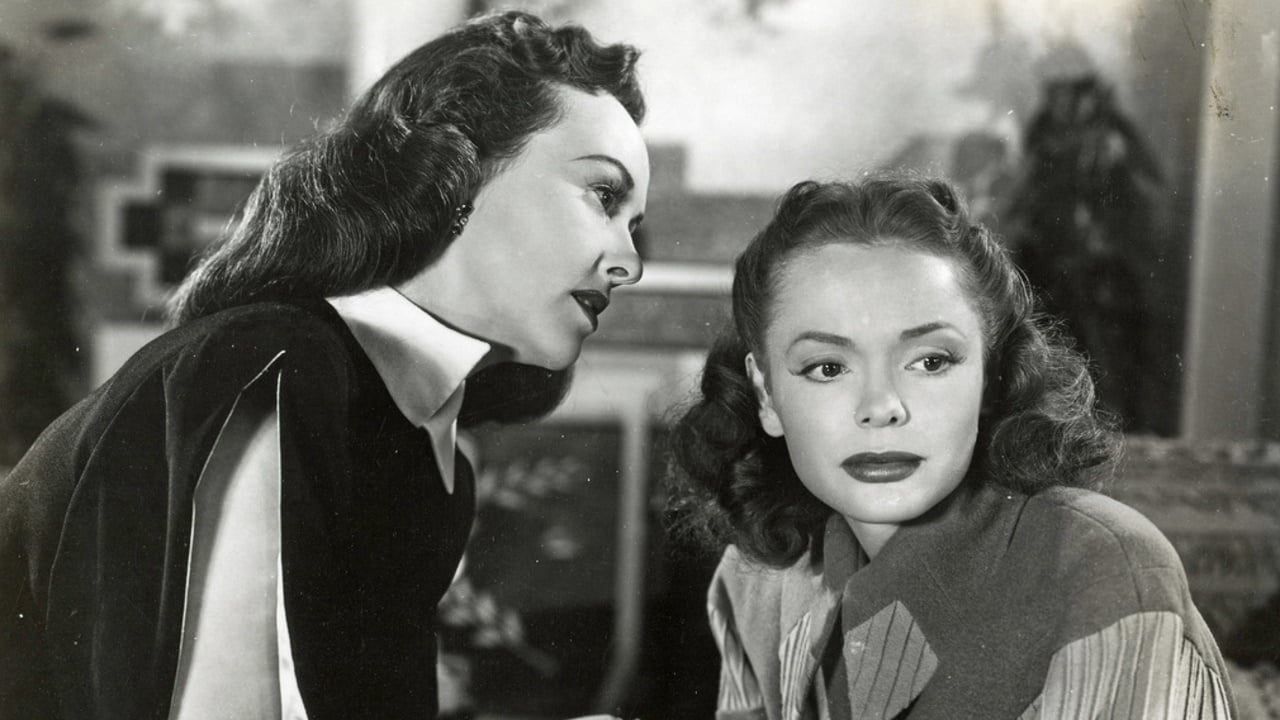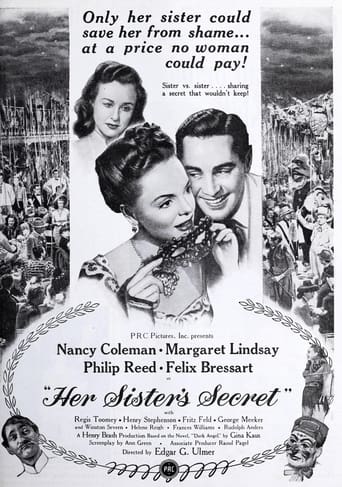

Toni (Nancy Coleman) is at Mardi Gras and meets a soldier named Dick (Phillip Reed) and they impetuously fall for each other and they have sex*. She gets pregnant and they lose contact. Not wanting to be an unwed mother, she convinces her sister (Margaret Lindsay) to adopt the child and pretend it is hers. Renee agrees but stipulates that Toni needs to stay away for at least three years, as she's worried Toni might change her mind and try to take the baby back to raise on her own. Some time passes...and Toni's commitment to the agreement begins to wane...Although there are a few overly dramatic and overwrought scenes, this is a good story and it really packs great emotional impact...particularly when Toni decides to go back on their agreement. You'll find yourself getting angry, sad...the whole gamut. Well worth seeing.*Sex in the 1940s was pretty much taboo in films, so here the camera pans to the sky and the music intones and then the sun rises...hardly a love scene but about as far as censors back then would let them go.
... View MoreThe typical movie but nicely about a woman who takes her unmarried sister's child as her own when the latter becomes pregnant after a one night fling with a soldier. Of course, the letter he sent her to explain that his leave had been canceled goes astray.Nancy Coleman as the unmarried lady and Margaret Lindsay, as the sister, play their roles to the hilt. We have guilt, promises broken and an adorable little boy.The atmosphere of the film is a good one as it begins at Mardi Gras time in New Orleans. When I first saw the film and what was taking place, I thought I was headed to the tear-jerker, "My Foolish Heart." Yes, the sisters may have been foolish in what they decided to do, but don't we do things as a sacrifice to children? The story ends on that note.
... View MoreI really enjoyed playing the part of Billy Gordon in this film. Although I was less than 4 years old, I have vivid memories of the entire process of making this film. The studio lights in those days were very bright & hot, causing the ladies' makeup to run after a short time. The big camera used for close-ups looked like a giant eye which made me quite nervous. I didn't like the tractor being used to move the props around...A tractor belonged outside in my opinion...My 3 year old little mind thought of it like a mechanical Tyrannosaurus Rex with big hind wheels and small front wheels...Quite a scary dinosaur! I remember that the entire cast & crew were so kind to me on & off the screen. My Dad, Mom, brothers & sisters were very encouraging & worked hard to tutor me...Lots of rehearsals were done at home, so that there would be no mistakes on the set. There are relatives and friends who are interested in purchasing this movie...Do you know if it is available on DVD?
... View MoreI found this a very touching film, perhaps because I too spent leave in New Orleans during Mardi Gras. However, in my case my loneliness was not assuaged by a tryst with a lovely young woman who gave me access to all the best New Orleans had to offer during wartime. In keeping with conventions of the day the woman is punished for her sin when, not having heard from her lover who has returned to duty, she gives up her baby to her married sister. Although somewhat dated & melodramatic the film works on many levels. I particularly liked the evocation of the New Orleans social scene during Mardi Gras, something I missed when I was there.
... View More